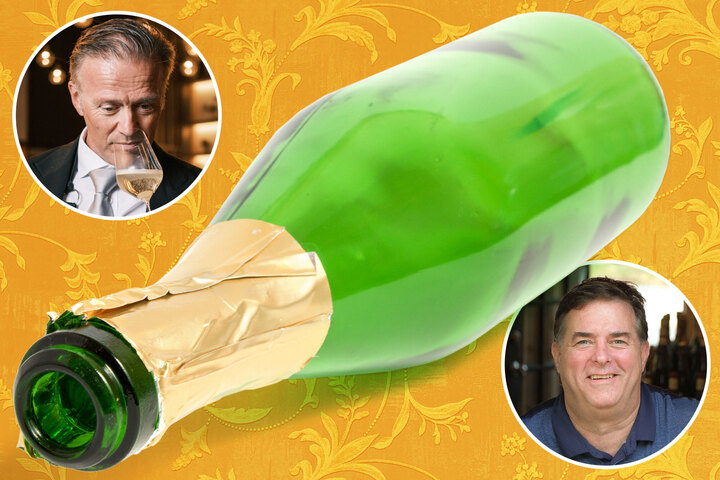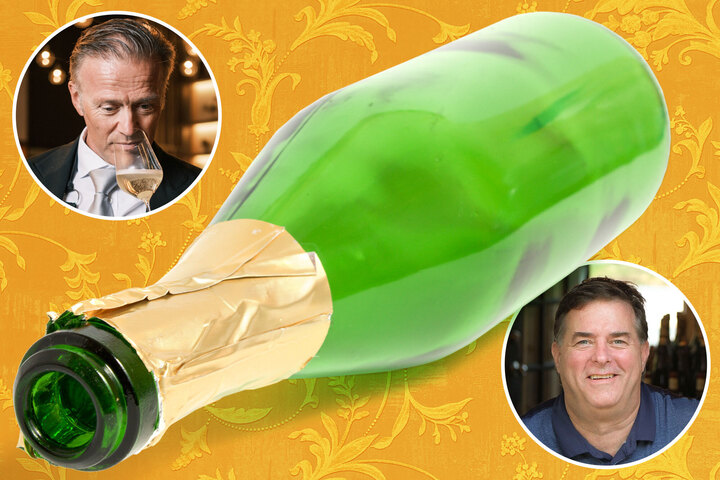

Veuve Clicquot has long been shorthand for luxury – name-checked in “Casablanca,” Ian Fleming’s novel “Casino Royale” and “Downton Abbey.”
But now the iconic yellow label isn’t cutting it with a certain group. On some of New York City’s high-end champagne-focused menus — at places like Aldo Sohm Wine bar, Coqodaq and Grand Brasserie — Veuve isn’t even listed.
A New York-based restaurant that recently opened a location with more than 60 champagnes on its menu failed Veuve for the first time in its long history in business.
“It’s mass-produced, it’s strong and it’s overpowered… it’s not what people want to drink in a champagne anymore,” said the restaurateur, who asked not to be named rather than upset distributors.
While he told The Post he has respect for the “institution,” which dates back to 1772, he said Veuve has gone downhill in recent years to keep up with demand.
Acquired by luxury conglomerate LVMH in 1987, Veuve overtook Moët & Chandon as America’s best-known brand about a decade ago — fueled in part by its ubiquitous presence in bottled nightclubs and song lyrics. from artists like Wiz Khalifa, Machine Gun Kelly, Lana Del Rey and Young Jeezy.
While Veuve has special vintages that can retail for thousands of dollars, its most popular offering, the $70 Yellow Label Champagne brut, is being treated by some oenophiles as sour, unbalanced and “basic” as it has been referred to. a Manhattan-based PR executive.
A West Village wine connoisseur named Mark, who uses the Instagram handle Lord Brut — a nod to the drier champagne classification — said he hasn’t had Veuve in years because it tastes “a little burnt” and ” the persistent smell seems unpleasant.
He pointed to the 2015 release of Veuve’s “Rich” blend, a sweeter Champagne, as evidence that the company seems focused on marketing rather than quality.
“Tell me who that would appeal to. Not champagne lovers,” said Mark. And the worst part? “It invited non-champagne people to think they were.”
Peter Viveriti, who runs Cavaniola Cellar in Sag Harbor, New York, told The Post that the more popular a champagne brand becomes — Veuve sold about 16 million bottles last year — the harder it becomes to monitor quality.
“Cache has gone beyond what the product deserves,” Viveriti said. “Over the last 20 to 30 years, it’s been produced at such a high level, and there’s no way they’re paying attention to making the perfect champagne, because there’s so much to do.
“When you have to produce it on a much larger scale, you get grapes from hundreds of different vineyards and all these different types of soil. Sometimes it works well, but I think your best chance for superior quality is a uniform quality in the grapes you’re harvesting.”
Viveriti doesn’t display Veuve in his store – where brands like Billecart-Salmon, Ruinart and Henry Beaufort take prime real estate – but he does have a box in storage.
“I have a few bottles on hand,” he said, “but only because I had to buy some for some of the boats in the harbor” — a reference to the massive yachts docked in Sag Harbor, whose passengers sometimes crave a kind of moment in Instagram.
Award-winning sommelier Aldo Sohm admits that the impressive brand Veuve has created is not leaving it without flavor. He doesn’t serve it at his eponymous wine bar—though he does list some special vintages of Veuve at Le Bernadin, the iconic Michelin-starred restaurant where he serves as wine director.
“They executed [marketing the brand] perfectly,” Sohm told The Post. “Is champagne the greatest? Maybe not. But it’s a workhorse.”
Sohm admitted he wouldn’t open a bottle for himself – he’d rather try something new – but it is, he thinks, a gateway to more sophisticated champagne.
“It’s a great starting point … and we go from there,” Sohm said. “If you’re eating your first fish and I expose you to a sea urchin, it would throw you out.”
One caterer, who asked to remain anonymous so as not to offend customers, said that, at this point, Veuve has a special purpose: “It’s sour – but it’s a way to show guests that you’ve spent a lot assigned to them”.
#NYC #wine #pros #refuse #buy #popular #overgrown #bubbly #brand
Image Source : nypost.com
Leave a Reply